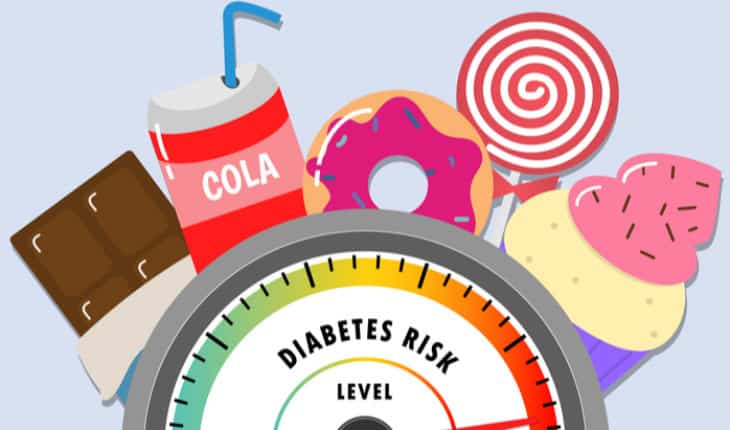Liver fat directly raises risk of type 2 diabetes, new study finds: New research published in Diabetes Care has revealed that having higher levels of fat in the liver, and having a smaller pancreas directly increase the risk of developing type 2 diabetes. The findings provide a significant step forward in understanding the biological causes driving the development of the condition. This research could unlock new treatment approaches and allow more tailored ways to help people reduce their risk of type 2 diabetes, as well as preventing cases altogether.
Researchers, funded by Diabetes UK and led by Diabetes UK RD Lawrence Fellow Dr Hanieh Yaghootkar, at Brunel University, used Mendelian randomisation – a statistical method that harnesses genetic and health information to understand cause and effect – to identify whether liver and pancreas size and fat content could play a direct role in causing type 2 diabetes.
The team analysed data from 32,859 people who had had MRI scans as part of the UK Biobank study. Liver and pancreas fat and size from these scans were analysed alongside information about genes that affect these factors, to understand their causal role in the risk of developing diabetes.
The researchers found that people with a genetic make-up that makes them prone to storing fat in their liver are more likely to have type 2 diabetes. This indicates that higher liver fat levels directly increase the risk of type 2 diabetes, with analysis showing that for every 5% increase in liver fat, risk of type 2 diabetes increases by 27%. Similarly, having a smaller pancreas was found to have a direct role in causing type 2 diabetes..
Pancreas fat levels and liver size were found to be associated with type 2 diabetes but were not found to play a direct role in raising type 2 diabetes risk. The researchers also looked at data from 9,000 people with type 1 diabetes; however, liver and pancreas size or fat levels were not found to be directly linked to the autoimmune condition.
Non-alcoholic fatty liver disease (NAFLD) occurs when fat builds up in the liver. NAFLD is most commonly seen in people living with obesity or overweight, and having higher levels liver fat has previously been associated with development of type 2 diabetes. However, this is the strongest evidence to date to suggest liver fat and pancreas size have a hand in causing the condition.
Type 2 diabetes is a complex condition with many risk factors, some that can’t be changed such as age, ethnicity and family history, and some that can, such as bodyweight. Previous research has shown that losing weight can reduce liver fat levels in people with type 2 diabetes. Piecing together how different factors impact the risk of developing type 2 diabetes is important in understanding the most effective ways to help people reduce their risk. In future, those with a certain genetic makeup that may make them prone to higher liver fat levels or a smaller pancreas, could be offered tailored support to help them take steps to reduce their risk of type 2 diabetes early on.
Diabetes UK RD Lawrence Fellow, Dr Hanieh Yaghootkar at Brunel University, said:
“People with type 2 diabetes usually have excess fat in their liver and pancreas, the two key organs in the maintenance of the normal level of blood sugar. The genetic analysis we used in this study is the best possible method to test this relationship and we provided evidence for a causal role of liver fat in type 2 diabetes risk.
“Our results encourage better treatment of those living with non-alcoholic fatty liver disease, and provide evidence for the multiple benefits of weight loss and better screening for diabetes risk in these people.
“We also showed that people with genes that make them more likely to have a smaller pancreas have a higher risk of type 2 diabetes. These results suggest that underlying mechanisms associated with reduced pancreatic volume precede diagnosis of type 2 diabetes.
“We hope by better characterisation of fat in different organs and also different organ size in the future, we can provide better understanding of the mechanisms that cause type 2 diabetes.”
Dr Lucy Chambers, Head of Research Communications at Diabetes UK which funded the research, said:
“We know from Diabetes UK’s landmark research on type 2 remission that liver and pancreas fat and size are linked to type 2 diabetes, but until now, it was unclear whether either of these factors played a direct role in causing type 2 diabetes.
“This important research funded by Diabetes UK pinpoints, for the first time, that liver fat and pancreas size directly contribute to an increased risk of developing type 2 diabetes and this is hardwired into our genetics. However, it’s important to remember that a complex mix of genetic, biological and environmental factors contribute to the development of type 2 diabetes. Knowing your overall risk of type 2 diabetes is the first step in accessing support, such as prevention programmes, to help reduce your risk
“Dr Yaghootkar’s research offers new insights into the causes of type 2 diabetes that, as we move towards an era of personalised medicine, could in future help us to improve the way we predict, prevent and treat the condition.”
To find out your risk of type 2 diabetes and steps you can take to reduce it, visit Diabetes UK’s free online Know Your Risk tool at diabetes.org.uk/risk.
- Diabetes UK’s aim is creating a world where diabetes can do no harm. Diabetes is the most devastating and fastest growing health crisis of our time, affecting more people than any other serious health condition in the UK – more than dementia and cancer combined. There is currently no known cure for any type of diabetes. With the right treatment, knowledge and support people living with diabetes can lead a long, full and healthy life. For more information about diabetes and the charity’s work, visit www.diabetes.org.uk
- Diabetes is a condition where there is too much glucose in the blood because the body cannot use it properly. If not managed well, both type 1 and type 2 diabetes can lead to devastating complications. Diabetes is one of the leading causes of preventable sight loss in people of working age in the UK and is a major cause of lower limb amputation, kidney failure and stroke.
- People with type 1 diabetes cannot produce insulin. About 8 per cent of people with diabetes have type 1. No one knows exactly what causes it, but it’s not to do with being overweight and it isn’t currently preventable. It’s the most common type of diabetes in children and young adults, starting suddenly and getting worse quickly. Type 1 diabetes is treated by daily insulin doses – taken either by injections or via an insulin pump. It is also recommended to follow a healthy diet and take regular physical activity.
- People with type 2 diabetes don’t produce enough insulin or the insulin they produce doesn’t work properly (known as insulin resistance). Around 90 per cent of people with diabetes have type 2. They might get type 2 diabetes because of their family history, age and ethnic background puts them at increased risk. They are also more likely to get type 2 diabetes if they are overweight. It starts gradually, usually later in life, and it can be years before they realise they have it. Type 2 diabetes is treated with a healthy diet and increased physical activity. In addition, tablets and/or insulin can be required.
- About 2 per cent of people have other types of diabetes. Other types include 11 different forms of monogenic diabetes, cystic fibrosis related diabetes and diabetes caused by rare syndromes. Certain medication such as steroids and antipsychotics, surgery or hormonal imbalances could also lead to other types of diabetes.
- New lipid-based pathway discovered as key to memory formation - 25th June 2025
- Crucial link could explain how Alzheimer’s takes hold - 25th June 2025
- Understanding Your Mind Can Improve Daily Life - 25th June 2025







